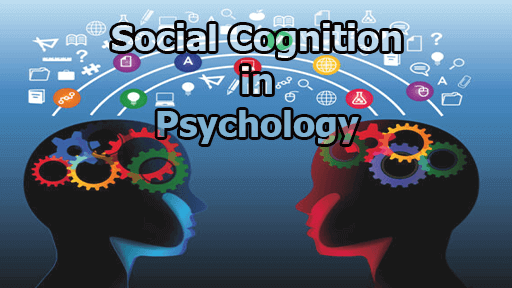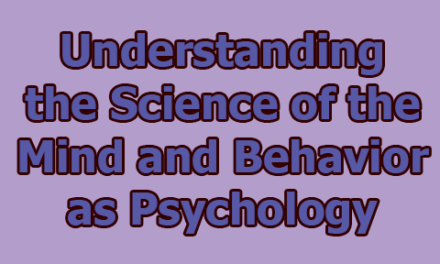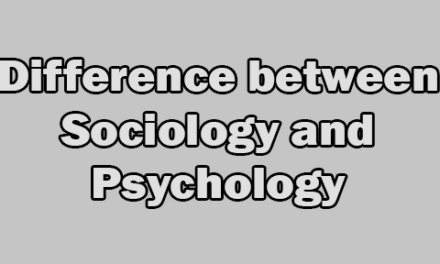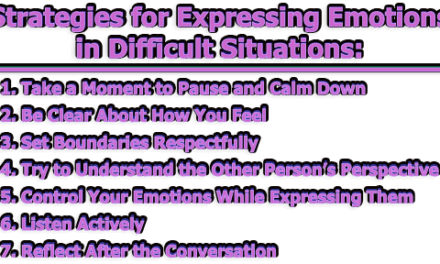Social Cognition in Psychology:
Basically, social cognition is how we understand people. It’s like figuring out what someone’s feeling or thinking by looking at their face or how they act. We all do this, but some people are better at it than others. If you have trouble understanding social situations, like if you’re stressed or have certain conditions, a therapist can help you learn to read people better. In the rest of this article, we will explore social cognition in psychology.
Definition of Social Cognition:
Social cognition refers to the cognitive processes that allow individuals to perceive, interpret, and respond to social information. It encompasses a range of mental operations, including attention, memory, and reasoning, applied to understanding oneself and others (Fiske & Taylor, 2013). In simple terms, social cognition focuses on how people process, store, and apply information about others and social situations. This field of psychology examines how people form judgments, develop attitudes, and navigate social interactions.
Types of Social Cognition:
Social cognition can be categorized into various types, each addressing a specific aspect of social interaction:
- Explicit Social Cognition: This involves conscious, deliberate processing of social information. Individuals actively think about and analyze social situations before forming judgments. For example, when meeting someone for the first time, a person may consciously assess their behavior, appearance, and speech to determine their personality traits. Explicit social cognition is slow, effortful, and influenced by logic and reasoning (Greenwald & Banaji, 1995).
- Implicit Social Cognition: In contrast to explicit processing, implicit social cognition operates automatically and unconsciously. It involves mental associations and biases that shape social interactions without conscious awareness. For instance, a person might unknowingly prefer interacting with individuals from their own cultural background due to implicit biases. This type of cognition plays a crucial role in prejudice and stereotyping, as individuals may act based on learned associations rather than intentional discrimination (Devine, 1989).
- Affective Social Cognition: This type of cognition focuses on the role of emotions in processing social information. Emotions can significantly influence how individuals interpret social situations, make judgments, and react to others. For example, a person in a happy mood may perceive ambiguous interactions more positively, whereas someone experiencing anxiety may misinterpret neutral expressions as threatening. Emotional intelligence and empathy are key components of affective social cognition (Barrett & Bliss-Moreau, 2009).
- Behavioral Social Cognition: This aspect involves learning from observing others and interpreting social cues. Through processes like social learning and imitation, individuals acquire new behaviors by watching others in their environment. This is particularly evident in childhood, where children model behaviors based on parental or peer influence. Albert Bandura’s social learning theory (1977) highlights how observing role models can shape social behavior and expectations.
- Cognitive Social Cognition: This category includes higher-order cognitive processes such as problem-solving, decision-making, and understanding social norms. It enables individuals to predict others’ behaviors based on past experiences and contextual information. Cognitive social cognition helps navigate complex social interactions, such as negotiating a business deal or resolving a conflict, by applying learned knowledge and reasoning skills (Fiske & Taylor, 2013).
Social Cognition Processes:
Social cognition involves several key processes that shape how individuals perceive, interpret, and respond to social information. These processes include:
- Social Perception: Social perception refers to how individuals gather and interpret social cues, such as facial expressions, tone of voice, and body language. This process enables people to make sense of social interactions and anticipate the behavior of others. For example, recognizing a friend’s smile as an expression of happiness allows for an appropriate social response (Ambady & Rosenthal, 1992).
- Attribution: Attribution is the process of explaining the causes of behavior. People use either situational attributions (external factors like environment or luck) or dispositional attributions (internal factors like personality or motivation) to understand why someone behaves a certain way (Heider, 1958). The fundamental attribution error occurs when individuals overemphasize dispositional factors while underestimating situational influences on others’ behavior (Ross et al., 1977).
- Mentalizing (Theory of Mind): Mentalizing, or theory of mind, is the ability to understand that others have thoughts, beliefs, and emotions different from one’s own. This skill is essential for empathy, predicting behavior, and navigating social relationships. Children typically develop theory of mind by age four or five, allowing them to recognize that someone else may hold a false belief about a situation (Premack & Woodruff, 1978).
- Schema Formation: Schemas are cognitive frameworks that help individuals organize and interpret social information. They influence expectations, memory, and behavior in social situations. For instance, people have schemas about social roles (e.g., what a teacher or doctor should be like) and group stereotypes, which can sometimes lead to biases (Bartlett, 1932).
- Stereotyping and Categorization: Social categorization is the tendency to group people based on shared characteristics such as race, gender, or occupation. While this simplifies information processing, it can also lead to stereotyping—overgeneralized beliefs about members of a group (Devine, 1989). Stereotypes can influence attitudes and behaviors, sometimes leading to prejudice and discrimination.
- Emotional Regulation in Social Cognition: Emotions play a crucial role in shaping social cognition. Emotional regulation involves managing emotional responses to social stimuli. For example, someone who feels anger after receiving criticism might engage in cognitive reappraisal to interpret the feedback constructively instead of reacting impulsively (Gross, 1998).
- Decision-Making in Social Contexts: Decision-making in social situations is influenced by cognitive biases, group dynamics, and social norms. Concepts like conformity (Asch, 1951), groupthink (Janis, 1972), and the framing effect (Tversky & Kahneman, 1981) demonstrate how individuals’ choices can be shaped by social pressures and cognitive distortions.
- Perspective-Taking and Empathy: Perspective-taking is the ability to adopt another person’s viewpoint, which fosters understanding and reduces interpersonal conflict. Empathy, a related process, involves sharing and responding to others’ emotions. Higher levels of empathy correlate with prosocial behavior and stronger social bonds (Batson et al., 1991).
- Social Learning and Imitation: Social learning occurs through observation, modeling, and imitation. Albert Bandura’s social learning theory (1977) suggests that individuals acquire behaviors by watching others, as demonstrated in the famous Bobo doll experiment. Social learning helps individuals develop social skills and norms.
- Cognitive Biases in Social Cognition: Several cognitive biases affect how people process social information:
- Confirmation bias: The tendency to seek information that confirms preexisting beliefs while ignoring contradictory evidence (Nickerson, 1998).
- Halo effect: The assumption that a person with one positive trait (e.g., physical attractiveness) possesses other positive traits (Thorndike, 1920).
- Self-serving bias: Attributing successes to internal factors but blaming failures on external factors (Miller & Ross, 1975).
Key Topics in Social Cognition:
Social cognition covers various key topics that influence human thought, behavior, and interactions in social contexts. Some of the most important topics include:
- Attitudes: Attitudes are evaluations of people, objects, or ideas, shaped by experiences, emotions, and social influence. They consist of cognitive (beliefs), affective (feelings), and behavioral (actions) components (Ajzen, 1991). Attitudes influence social behavior, and they can be changed through persuasion and social learning.
- Person Perception: Person perception refers to how people form impressions and make judgments about others. This process is influenced by factors such as physical appearance, body language, and prior knowledge (Macrae & Bodenhausen, 2000). The halo effect, where a single positive trait leads to overly favorable impressions, is an example of bias in person perception (Thorndike, 1920).
- Prejudice and Stereotypes: Prejudice is a negative attitude toward a group based on preconceived notions, while stereotypes are generalized beliefs about members of a group (Devine, 1989). These cognitive shortcuts can lead to discrimination and social bias. Efforts to reduce prejudice include intergroup contact and perspective-taking (Allport, 1954).
- Self-Concept: Self-concept refers to an individual’s perception of themselves, including their attributes, abilities, and social identity (Markus & Wurf, 1987). It is shaped by social interactions, personal experiences, and cultural influences. A stable self-concept contributes to confidence and social adaptability.
- Discrimination: Discrimination involves unfair treatment of individuals based on their group membership, often as a result of prejudice and stereotyping (Dovidio et al., 2010). Discrimination can be explicit or implicit and occurs in various social settings, including workplaces, education, and legal systems.
- Persuasion: Persuasion is the process of changing attitudes and behaviors through communication. The elaboration likelihood model (Petty & Cacioppo, 1986) explains that persuasion occurs through two routes: the central route (logical argumentation) and the peripheral route (emotional appeals and superficial cues).
- Decision-Making: Social cognition influences decision-making through biases, heuristics, and group dynamics. The availability heuristic (Tversky & Kahneman, 1974) leads people to rely on readily available information when making judgments. Groupthink (Janis, 1972) occurs when individuals conform to group opinions, often leading to poor decisions.
Real-Life Examples of Social Cognition:
Social cognition is evident in everyday interactions and influences how people interpret social situations. Below are several real-life examples of social cognition in action:
- First Impressions in Job Interviews: When meeting a candidate for the first time, an interviewer quickly forms an impression based on physical appearance, verbal communication, and nonverbal cues such as eye contact and posture (Macrae & Bodenhausen, 2000). This initial impression can influence hiring decisions, demonstrating the role of person perception in social cognition.
- Stereotype Threat in Education: Students who belong to stereotyped groups may experience anxiety that affects their academic performance. For instance, research by Steele and Aronson (1995) found that African American students performed worse on standardized tests when they were reminded of racial stereotypes about intelligence. This example highlights how social cognition shapes self-perception and performance.
- Social Media Influence on Attitudes: Platforms like Facebook, Twitter, and Instagram influence how people perceive themselves and others. Exposure to curated images and opinions can shape attitudes about beauty standards, politics, and social norms (Fardouly et al., 2015). This reflects how social cognition processes, such as social comparison and persuasion, operate in digital environments.
- Groupthink in Decision-Making: In workplace meetings, employees may conform to the majority opinion rather than voicing dissenting views, even if they believe the decision is flawed. This phenomenon, known as groupthink (Janis, 1972), occurs when social pressure discourages critical thinking and independent judgment, demonstrating how social cognition affects group decision-making.
- Empathy in Medical Professionals: Physicians and nurses rely on perspective-taking to understand patients’ emotions and provide compassionate care. The ability to recognize nonverbal cues, such as facial expressions of pain, and respond appropriately is a key component of social cognition in healthcare settings (Decety & Jackson, 2004).
- Advertising and Consumer Behavior: Advertisers use persuasive techniques to shape consumer attitudes and purchasing decisions. For example, celebrity endorsements and emotional appeals tap into cognitive biases, such as the halo effect (Thorndike, 1920), to make products more appealing.
- Social Anxiety in Public Speaking: Individuals with social anxiety disorder often overestimate the likelihood of negative evaluation by others. Their heightened self-consciousness and fear of judgment demonstrate the role of social cognition in shaping anxiety-related behaviors (Clark & Wells, 1995).
- Cultural Differences in Nonverbal Communication: Social cognition is influenced by cultural norms. For example, in Western cultures, direct eye contact is often interpreted as confidence, whereas in some Asian cultures, prolonged eye contact may be perceived as disrespectful (Markus & Kitayama, 1991). This demonstrates how social perception varies across cultural contexts.
How Social Cognition Develops:
Social cognition develops through a combination of biological, cognitive, and environmental influences. It emerges early in life and evolves throughout childhood and adulthood as individuals gain more social experience.
- Early Childhood Development: Infants begin to exhibit social cognition skills within the first few months of life. They recognize faces, respond to social cues, and develop joint attention—the ability to focus on objects that others are looking at or pointing to (Meltzoff & Moore, 1997). By 12 months, babies engage in social referencing, using caregivers’ emotional expressions to guide their behavior in uncertain situations (Saarni et al., 2006).
- Theory of Mind (ToM) Development: Between ages 3 and 5, children develop a Theory of Mind (ToM), which is the ability to understand that others have thoughts, emotions, and perspectives different from their own (Wellman, 1990). This cognitive milestone is essential for empathy, deception, and cooperation. ToM continues to develop as children refine their understanding of social intentions and beliefs.
- Role of Social Learning: Social cognition is shaped by observational learning, where children and adults acquire social behaviors by watching others (Bandura, 1986). Parents, teachers, and peers play a significant role in modeling social interactions, norms, and moral reasoning.
- Cognitive and Neural Development: The prefrontal cortex, responsible for executive functions like decision-making and social reasoning, continues developing into early adulthood (Blakemore & Choudhury, 2006). Neural networks supporting social cognition, such as the mirror neuron system, enable individuals to understand and mimic others’ behaviors and emotions (Rizzolatti & Craighero, 2004).
- Cultural and Environmental Influences: Cultural norms shape how individuals interpret social cues and interact with others (Markus & Kitayama, 1991). For example, collectivist cultures emphasize group harmony and interdependence, whereas individualist cultures prioritize personal achievement and autonomy, leading to different patterns of social cognition development.
- Adolescence and Social Cognition: During adolescence, social cognition becomes more complex due to heightened self-consciousness and peer influence. Adolescents develop advanced skills in perspective-taking, moral reasoning, and social identity formation (Steinberg & Morris, 2001).
- Adulthood and Aging: In adulthood, social cognition is refined through life experiences, professional interactions, and relationships. While social cognitive abilities remain stable for most of adulthood, aging can lead to declines in certain aspects, such as processing speed and recognizing subtle social cues (Henry et al., 2013).
Disorders That Impact Social Cognition:
Several psychological and neurological disorders can impair social cognition, affecting individuals’ ability to perceive, interpret, and respond to social cues. Below are some of the most significant disorders that impact social cognition:
- Autism Spectrum Disorder (ASD): Individuals with ASD often experience difficulties in understanding social cues, recognizing emotions, and engaging in reciprocal social interactions (Baron-Cohen et al., 2000). Impairments in Theory of Mind (ToM) make it challenging for them to infer others’ thoughts and intentions.
- Bipolar Disorder: People with bipolar disorder may struggle with emotional regulation and social perception, particularly during manic or depressive episodes (Lembke & Ketter, 2002). These fluctuations can affect their ability to interpret social situations accurately.
- Borderline Personality Disorder (BPD): Individuals with BPD often exhibit heightened emotional sensitivity and difficulty maintaining stable relationships. They may misinterpret others’ intentions, leading to intense emotional reactions and interpersonal conflicts (Herpertz & Bertsch, 2014).
- Dementia: Neurodegenerative diseases, such as Alzheimer’s disease, can lead to deficits in social cognition. Individuals with dementia may have difficulty recognizing familiar faces, understanding emotions, and engaging in appropriate social behavior (Henry et al., 2013).
- Depression: Depression is associated with negative biases in social cognition, such as increased sensitivity to rejection and difficulty interpreting positive social cues (Joormann & Gotlib, 2010). These cognitive distortions can contribute to social withdrawal and impaired relationships.
- Post-Traumatic Stress Disorder (PTSD): PTSD can lead to hypervigilance and difficulties in trusting others. Affected individuals may misinterpret neutral social interactions as threatening, impacting their ability to engage in healthy social relationships (Janke et al., 2018).
- Schizophrenia: Schizophrenia is characterized by impairments in social cognition, including difficulties in emotion recognition, Theory of Mind, and social reasoning (Green et al., 2005). These deficits contribute to social withdrawal and impaired daily functioning.
- Social Anxiety Disorder: People with social anxiety disorder experience heightened self-consciousness and fear of negative evaluation. This can lead to avoidance of social interactions and difficulty forming meaningful relationships (Clark & Wells, 1995).
- Traumatic Brain Injury (TBI): Damage to the prefrontal cortex due to TBI can result in deficits in social cognition, including impaired impulse control, difficulty understanding social norms, and challenges in emotional regulation (McDonald et al., 2007).
- Williams Syndrome: Williams syndrome is a genetic disorder associated with heightened social interest but impaired social judgment. Individuals with this condition tend to be overly friendly but struggle with understanding social boundaries (Jarvinen-Pasley et al., 2008).
How a Social Cognitive Therapist Can Help:
A social cognitive therapist specializes in helping individuals develop and improve their social cognition skills. This type of therapy is particularly beneficial for individuals struggling with social perception, communication, and interaction due to various psychological or neurological conditions. Below are some key ways a social cognitive therapist can assist:
- Enhancing Theory of Mind (ToM) Skills: Many individuals with social cognition deficits, such as those with Autism Spectrum Disorder (ASD) or schizophrenia, struggle with understanding others’ thoughts and emotions. Therapists use structured interventions, such as role-playing and perspective-taking exercises, to strengthen ToM abilities (Baron-Cohen et al., 2000).
- Improving Emotion Recognition and Expression: Recognizing and interpreting facial expressions and body language are crucial social skills. Therapists employ techniques such as emotion identification training and video modeling to help individuals improve their ability to recognize emotions in others (Mancini et al., 2013).
- Cognitive Behavioral Therapy (CBT) for Social Anxiety and Depression: Individuals with social anxiety disorder or depression often experience negative social thoughts and avoidance behaviors. Cognitive Behavioral Therapy (CBT) helps reframe distorted social perceptions and encourages gradual exposure to social situations, reducing fear and improving confidence (Clark & Wells, 1995).
- Social Skills Training (SST): Social Skills Training is a structured intervention designed to teach appropriate social behaviors, such as initiating conversations, maintaining eye contact, and understanding nonverbal cues. This is particularly helpful for individuals with ASD, schizophrenia, or traumatic brain injury (Bellack et al., 2004).
- Developing Adaptive Social Decision-Making Skills: Poor decision-making in social contexts can lead to misunderstandings and conflicts. Therapists guide individuals in evaluating social situations, considering multiple perspectives, and making informed choices through problem-solving exercises (Turner & Noh, 2014).
- Mindfulness and Stress Reduction Techniques: People with PTSD, borderline personality disorder, or social anxiety often experience heightened emotional responses in social settings. Mindfulness-based interventions help individuals regulate their emotions and remain present in interactions, improving overall social functioning (Hofmann et al., 2010).
- Family and Group Therapy: In some cases, therapy includes family members or peer support groups to provide a supportive social environment. Group therapy allows individuals to practice social skills in a safe setting and receive constructive feedback (Yalom & Leszcz, 2005).
- Using Technology-Assisted Interventions: Virtual reality (VR) and artificial intelligence (AI)-based programs are increasingly being used to simulate social interactions and provide real-time feedback, making social cognitive training more effective and engaging (Parsons & Cobb, 2011).
Cultural Differences in Social Cognition:
Culture plays a significant role in shaping social cognition, influencing how individuals perceive, interpret, and respond to social cues. Different cultural backgrounds lead to variations in social norms, communication styles, and interpersonal expectations. Below are key ways in which social cognition differs across cultures:
- Individualism vs. Collectivism: One of the most well-documented cultural distinctions in social cognition is between individualistic and collectivist societies. Individualistic cultures (e.g., the United States, Canada, and Western Europe) emphasize personal autonomy, self-expression, and independence, leading to a self-focused social cognition. In contrast, collectivist cultures (e.g., Japan, China, and South Korea) prioritize group harmony, interdependence, and social roles, shaping a more relational and context-dependent cognitive style (Markus & Kitayama, 1991).
- Perception of the Self: The concept of self varies widely across cultures. In Western, individualistic societies, people tend to have an independent self-construal, viewing themselves as distinct from others. In collectivist cultures, individuals are more likely to have an interdependent self-construal, seeing themselves as part of a larger social network (Triandis, 1995).
- Emotional Expression and Recognition: Cultural norms influence how emotions are expressed and interpreted. In some East Asian cultures, emotional restraint is valued, and individuals may suppress overt displays of emotion to maintain social harmony. In contrast, Western cultures tend to encourage emotional expressiveness (Matsumoto, 2006). These differences affect how emotions are recognized and responded to in social interactions.
- Attribution Styles: How people explain others’ behaviors varies across cultures. In Western societies, people tend to engage in dispositional attribution, attributing behaviors to internal traits and personality (the fundamental attribution error). In contrast, individuals in East Asian cultures are more likely to consider situational factors when explaining behavior, leading to a more holistic approach to social cognition (Choi et al., 1999).
- Nonverbal Communication: Nonverbal cues such as eye contact, gestures, and personal space are interpreted differently across cultures. For example, direct eye contact is considered a sign of confidence in Western cultures but may be perceived as disrespectful in some Asian and Middle Eastern cultures (Argyle, 1988). Understanding these differences is essential for effective cross-cultural communication.
- Decision-Making and Social Influence: Cultural differences impact decision-making processes, especially in social contexts. In individualistic cultures, decisions tend to be based on personal preferences and individual goals. In collectivist societies, decision-making is often influenced by family, community, and social expectations (Nisbett et al., 2001).
- Social Norms and Conformity: Cultures also differ in the degree to which conformity is encouraged. In collectivist cultures, social norms strongly influence behavior, and deviation from group expectations is discouraged. In contrast, individualistic cultures place greater emphasis on personal choice and uniqueness (Bond & Smith, 1996).
- Cultural Differences in Empathy and Perspective-Taking: Research suggests that people from collectivist cultures may engage in higher levels of cognitive empathy, meaning they are more attuned to others’ perspectives due to their interdependent social structures. However, individuals from individualistic cultures may exhibit higher levels of emotional empathy, expressing emotions more openly (Atkins et al., 2016).
Research and Challenges in Social Cognition:
The study of social cognition is an ongoing field, but it faces some challenges against widely accepted theories.
Future Areas of Study: Researchers are keen to explore various questions related to how we understand social interactions. Our perceptions of others significantly impact the way we build relationships, communicate, and treat one another. Here are some key topics of interest in social cognition:
- How do we form attitudes, and what impact do these attitudes have on our social interactions?
- How do we read other people’s emotions? What clues help us understand their thoughts and feelings?
- What shapes our self-concept, and how does it affect our relationships with others?
- How do our thoughts influence our feelings?
- What mental processes help us form opinions about others as individuals?
Challenges: One common critique of social cognition research is that it often emphasizes individual behavior too much. Given that the topic is inherently social, some believe that traditional models used to understand the cognitive processes might be too narrow in focus.
An approach that looks at the collective and interactive nature of human thought could lead to a deeper understanding of social behavior.
Additionally, some critics argue that the field tends to prioritize reasons for certain behaviors rather than exploring their deeper causes.
It is apparent that social cognition is about how we think and understand social interactions. By learning more about this, we can see how other people influence our actions and decisions. It also helps us recognize how our own thoughts shape our views and reactions to others. If you’re finding social situations tough, talking to a social cognitive therapist can be a good way to develop your social skills through therapy.
Frequently Asked Questions (FAQs):
What exactly does “Social Cognition” mean?
It’s how we think about other people and social situations. It’s how we understand, remember, and use information about the social world.
How do we actually do Social Cognition?
We use our brains to:
- Pay attention: Notice what’s happening around us.
- Interpret: Figure out what people’s actions and words mean.
- Remember: Store information about people and events.
- Make judgments: Form opinions and decide how to act.
What are “schemas” in Social Cognition?
Schemas are like mental shortcuts. They’re organized ideas we have about people, places, or things. For example, you might have a schema for “librarian” that includes being quiet and helpful.
What are “stereotypes”?
Stereotypes are a type of schema. They’re oversimplified ideas about groups of people. They can be positive or negative, but they’re often inaccurate.
What is “attribution”?
Attribution is how we explain why people do what they do. We try to figure out if their behavior is because of their personality (internal) or the situation (external).
Why is Social Cognition important in our daily lives?
It helps us:
- Understand others.
- Communicate effectively.
- Build relationships.
- Navigate social situations.
Can Social Cognition be wrong?
Yes! We can make mistakes in how we think about others. For example, we might:
- Make snap judgments based on first impressions.
- Let our biases influence our thinking.
- Misinterpret someones actions.
How does Social Cognition affect our behavior?
Our thoughts about others influence how we act towards them. If we think someone is friendly, we’ll probably be friendly back. If we think someone is untrustworthy, we might avoid them.
References:
- Ambady, N., & Rosenthal, R. (1992). Thin slices of expressive behavior as predictors of interpersonal consequences: A meta-analysis. Psychological Bulletin, 111(2), 256–274. https://doi.org/10.1037/0033-2909.111.2.256
- Argyle, M. (1988). Bodily Communication (2nd ed.). New York: Methuen.
- Ajzen, I. (1991). The theory of planned behavior. Organizational Behavior and Human Decision Processes, 50(2), 179–211. https://doi.org/10.1016/0749-5978(91)90020-T
- Allport, G. W. (1954). The nature of prejudice. Addison-Wesley.
- Asch, S. E. (1951). Effects of group pressure upon the modification and distortion of judgments. In H. Guetzkow (Ed.), Groups, leadership and men; research in human relations (pp. 177–190). Carnegie Press.
- Atkins, S. J., Bentley, I., Hurst, H. T., Sinclair, J. K. & Hesketh, C. (2016). The Presence of Bilateral Imbalance of the Lower Limbs in Elite Youth Soccer Players of Different Ages. J Strength Cond Res, 30(4), 1007-13. https://doi.org/10.1519/JSC.0b013e3182987044
- Bandura, A. (1986). Social Foundations of Thought and Action: A Social Cognitive Theory. Englewood Cliffs, NJ: Prentice Hall.
- Barrett, L. F., & Bliss-Moreau, E. (2009). She’s emotional. He’s having a bad day: Attributional explanations for emotion stereotypes. Emotion, 9(5), 649–658. https://doi.org/10.1037/a0016821
- Bartlett, F. C. (1932). Remembering: A study in experimental and social psychology. Cambridge University Press.
- Batson, C. D., Batson, J.G., Slingsby, J.K., Harrell, K.L., Peekna, H.M. & Todd, R.M. (1991). Empathic joy and the empathy-altruism hypothesis. J Pers Soc Psychol, 61(3), 413-26. https://doi.org/10.1037//0022-3514.61.3.413
- Bellack, A.S. (2004). Skills training for people with severe mental illness. Psychiatr Rehabil J, 27(4), 375-91. https://doi.org/10.2975/27.2004.375.391
- Blakemore, S. J. & Choudhury S. (2006). Development of the adolescent brain: implications for executive function and social cognition. J Child Psychol Psychiatry, 47(3-4), 296-312. https://doi.org/10.1111/j.1469-7610.2006.01611.x
- Bond, R., & Smith, P. B. (1996). Culture and conformity: A meta-analysis of studies using Asch’s (1952b, 1956) line judgment task. Psychological Bulletin, 119(1), 111–137. https://doi.org/10.1037/0033-2909.119.1.111
- Clark, D. M., & Wells, A. (1995). A cognitive model of social phobia. In R. G. Heimberg, M. R. Liebowitz, D. A. Hope, & F. R. Schneier (Eds.), Social phobia: Diagnosis, assessment, and treatment (pp. 69–93). The Guilford Press.
- Choi, I., Nisbett, R. E., & Norenzayan, A. (1999). Causal attribution across cultures: Variation and universality. Psychological Bulletin, 125(1), 47–63. https://doi.org/10.1037/0033-2909.125.1.47
- Decety, J. & Jackson, P.L. (2004). The functional architecture of human empathy. Behav Cogn Neurosci Rev, 3(2), 71-100. https://doi.org/1010.1177/1534582304267187
- Devine, P. G. (1989). Stereotypes and prejudice: Their automatic and controlled components. Journal of Personality and Social Psychology, 56(1), 5–18. https://doi.org/10.1037/0022-3514.56.1.5
- Dovidio, J. F., Hewstone, M., Glick, P., & Esses, V. M. (2010). The SAGE handbook of prejudice, stereotyping and discrimination. SAGE Publications Ltd, https://doi.org/10.4135/9781446200919
- Fardouly, J., Diedrichs, P. C., Vartanian, L.R. & Halliwell, E. (2015). Social comparisons on social media: the impact of Facebook on young women’s body image concerns and mood. Body Image, 13, 38-45. https://doi.org/10.1016/j.bodyim.2014.12.002
- Fiske, S. T., & Taylor, S. E. (2013). Social Cognition: From Brains to Culture. Thousand Oaks, CA: Sage.
- Greenwald, A. G., & Banaji, M. R. (1995). Implicit social cognition: Attitudes, self-esteem, and stereotypes. Psychological Review, 102(1), 4–27. https://doi.org/10.1037/0033-295X.102.1.4
- Gross, J. J. (1998). The emerging field of emotion regulation: An integrative review. Review of General Psychology, 2(3), 271–299. https://doi.org/10.1037/1089-2680.2.3.271
- Henry, M. L., Rising, K., DeMarco, A. T., Miller, B. L., Gorno-Tempini, M. L. & Beeson, P. M. (2013). Examining the value of lexical retrieval treatment in primary progressive aphasia: two positive cases. Brain Lang, 127(2), 145-56. https://doi.org/10.1016/j.bandl.2013.05.018
- Herpertz, S. C., & Bertsch, K. (2014). The social-cognitive basis of personality disorders. Current Opinion in Psychiatry, 27(1), 73–77. https://doi.org/10.1097/YCO.0000000000000026
- Hofmann, S. G., Sawyer, A. T., Witt, A. A., & Oh, D. (2010). The effect of mindfulness-based therapy on anxiety and depression: A meta-analytic review. Journal of Consulting and Clinical Psychology, 78(2), 169–183. https://doi.org/10.1037/a0018555
- Janis, I. L. (1972). Victims of groupthink: A psychological study of foreign-policy decisions and fiascoes. Houghton Mifflin.
- Janke, K., Driessen, M., Behnia, B., Wingenfeld, K., & Roepke, S. (2018). Emotional intelligence in patients with posttraumatic stress disorder, borderline personality disorder and healthy controls. Psychiatry Research, 264, 290-296. https://doi.org/10.1016/j.psychres.2018.03.078
- Järvinen-Pasley, A., Bellugi, U., Reilly, J., Mills, D. L., Galaburda, A., Reiss, A. L. & Korenberg, J. R. (2008). Defining the social phenotype in Williams syndrome: a model for linking gene, the brain, and behavior. Dev Psychopathol, 20(1), 1-35. https://doi.org/10.1017/S0954579408000011
- Joormann, J., & Gotlib, I. H. (2010). Emotion regulation in depression: Relation to cognitive inhibition. Cognition and Emotion, 24(2), 281–298. https://doi.org/10.1080/02699930903407948
- Lembke, A., & Ketter, T. A. (2002). Impaired recognition of facial emotion in mania. The American Journal of Psychiatry, 159(2), 302–304. https://doi.org/10.1176/appi.ajp.159.2.302
- Macrae, C. N., & Bodenhausen, G. V. (2000). Social cognition: Thinking categorically about others. Annual Review of Psychology, 51, 93–120. https://doi.org/10.1146/annurev.psych.51.1.93
- Markus, H., & Wurf, E. (1987). The dynamic self-concept: A social psychological perspective. Annual Review of Psychology, 38, 299–337. https://doi.org/10.1146/annurev.ps.38.020187.001503
- Matsumoto, D. (2006). Are Cultural Differences in Emotion Regulation Mediated by Personality Traits? Journal of Cross-Cultural Psychology, 37(4), 421–437. https://doi.org/10.1177/0022022106288478
- McDonald, K.M., Sundaram, V., Bravata, D.M., et al. (2007) Closing the Quality Gap: A Critical Analysis of Quality Improvement Strategies (Vol. 7: Care Coordination). Agency for Healthcare Research and Quality, Rockville. http://www.ncbi.nlm.nih.gov/books/NBK44015/
- Meltzoff, A. N., & Moore, M. K. (1997). Explaining facial imitation: A theoretical model. Early Development & Parenting, 6(3-4), 179–192. https://doi.org/10.1002/(SICI)1099-0917(199709/12)6:3/4<179::AID-EDP157>3.0.CO;2-R
- Miller, D. T., & Ross, M. (1975). Self-serving biases in the attribution of causality: Fact or fiction? Psychological Bulletin, 82(2), 213–225. https://doi.org/10.1037/h0076486
- Nickerson, R. S. (1998). Confirmation bias: A ubiquitous phenomenon in many guises. Review of General Psychology, 2(2), 175–220. https://doi.org/10.1037/1089-2680.2.2.175
- Nisbett, R. et al. (2001). Culture and Systems of Thought: Holistic versus Analytic Cognition. Psychological Review, 108, 291-310. https://doi.org/10.1037/0033-295X.108.2.291
- Parsons, S., & Cobb, S. (2011). State-of-the-art of virtual reality technologies for children on the autism spectrum. European Journal of Special Needs Education, 26(3), 355–366. https://doi.org/10.1080/08856257.2011.593831
- Petty, R.E. and Cacioppo, J.T. (1986) The Elaboration Likelihood Model of Persuasion. Advances in Experimental Social Psychology, 19, 123-205. http://dx.doi.org/10.1016/S0065-2601(08)60214-2
- Pitchforth, J., Fahy, K., Ford, T., Wolpert, M., Viner, R. M. & Hargreaves, D. S. (2019). Mental health and well-being trends among children and young people in the UK, 1995-2014: analysis of repeated cross-sectional national health surveys. Psychol Med, 49(8), 1275-1285. https://doi.org/10.1017/S0033291718001757
- Premack, D., & Woodruff, G. (1978). Does the chimpanzee have a theory of mind? Behavioral and Brain Sciences, 1(4), 515–526. https://doi.org/10.1017/S0140525X00076512
- Rizzolatti, G. and Craighero, L. (2004) The Mirror Neuron System. Annual Review of Neuroscience, 27, 169-192. http://dx.doi.org/10.1146/annurev.neuro.27.070203.144230
- Ross, L. D., Amabile, T. M., & Steinmetz, J. L. (1977). Social roles, social control, and biases in social-perception processes. Journal of Personality and Social Psychology, 35(7), 485–494. https://doi.org/10.1037/0022-3514.35.7.485
- Saarni, C., Campos, J. J., Camras, L. A., & Witherington, D. (2006). Emotional Development: Action, Communication, and Understanding. In N. Eisenberg, W. Damon, & R. M. Lerner (Eds.), Handbook of child psychology: Social, emotional, and personality development (6th ed., pp. 226–299). John Wiley & Sons, Inc..
- Steele, C. M., & Aronson, J. (1995). Stereotype threat and the intellectual test performance of African Americans. Journal of Personality and Social Psychology, 69(5), 797–811. https://doi.org/10.1037/0022-3514.69.5.797
- Steinberg, L., & Morris, A. S. (2001). Adolescent development. Annual Review of Psychology, 52, 83-110. http://dx.doi.org/10.1146/annurev.psych.52.1.83
- Thorndike, E.L. (1920). A constant error in psychological ratings. Journal of Applied Psychology, 4(1), 25–29. https://doi.org/10.1037/h0071663
- Triandis, H. C. (1995). Individualism & collectivism. Westview Press.
- Turner, R. J., Turner, J. B., & Hale, W. B. (2014). Social relationships and social support. In R. J. Johnson, R. J. Turner, & B. G. Link (Eds.), Sociology of mental health: Selected topics from forty years, 1970s-2010s (pp. 1–20). Springer Science + Business Media. https://doi.org/10.1007/978-3-319-07797-0_1
- Tversky, A., & Kahneman, D. (1974). Judgment under uncertainty: Heuristics and biases. Science, 185(4157), 1124–1131. https://doi.org/10.1126/science.185.4157.1124
- Tversky, A., & Kahneman, D. (1981). The framing of decisions and the psychology of choice. Science, 211(4481), 453–458. https://doi.org/10.1126/science.7455683
- Wellman, H. M. (1990). The Child’s theory of mind. Cambridge, MA: MIT Press.
- Yalom, I. D., & Leszcz, M. (Collaborator). (2005). The theory and practice of group psychotherapy (5th ed.). Basic Books/Hachette Book Group.

Library Lecturer at Nurul Amin Degree College










